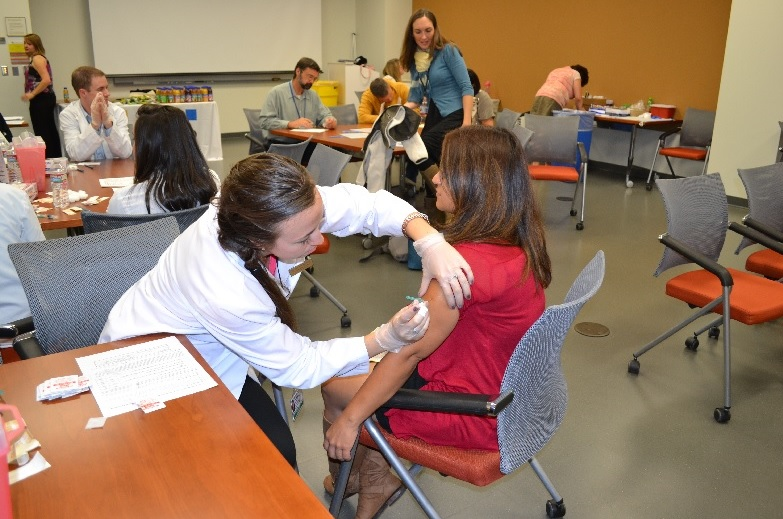Thinking About Immunization
It’s easy to default into thinking that the way things are is the way they have always been. Not so.
It was within a year or two of 1960. For years, families had worried about polio. My cousin Rosemary had polio and walked with crutches; one summer they thought my older brother might have caught it. Then, at last, there was a polio vaccine available. My parents took the whole family up to Fairview Elementary School for immunization. No hard sell to talk us into getting vaccinated; polio had sold us and everyone we knew on the value of the vaccine. People were lined up around the building as might be seen today buying tickets for a Taylor Swift concert. Jonas Salk and Albert Sabin, developers of the two polio vaccines, were national heroes.
Vaccines were recognized as huge public health advances back in the day, because people knew the diseases well.
These were diseases that regularly killed children. My mom, who will soon be 90, lost a brother to whooping cough and had known neighbors with diptheria. Rest assured our family was always up-to-date on those vaccines. Other illnesses were recognized as unavoidable childhood diseases, because vaccines had not yet been developed. Children of the 1950s could expect to contract measles, mumps, rubella, chicken pox, many of the diseases that children are vaccinated for today.
One summer in pharmacy school, I had a job at the US Public Health Service Hospital in Staten Island, NY. We were the smallpox hospital for sailors arriving in New York City and had a special room in which anyone suspected to have smallpox would go; the sealed room had special ventilation and an oven in which everything was to be burned instead of being allowed to leave the room. One of my colleagues very reluctantly received a smallpox vaccine just so she could work at the hospital. Why would she need a vaccine? – there had not been a smallpox case in about 30 years (at which time over 6.4 million New Yorkers were vaccinated to limit the outbreak to only 12 people and 2 deaths). Finally in 1980, smallpox was eradicated through vaccination. Today only those over 50 or 60 are likely to have scars from the smallpox vaccination.
Almost gone from living memory is any recollection of the diseases for which we vaccinate today.
Parents question the value of childhood immunizations for diseases which are now only words used to describe a vaccine.
Our immune systems control disease using antibodies that recognize the unique patterns of each bacteria or virus. The immune system can recognize the microbe producing any disease you catch; you will survive and recover only when your immune system recognizes the microbe and produces antibodies. The safer way to produce immunity is through vaccination – exposing your body to the microbe that has been weakened or killed, so your immune system can recognize it without having to risk the disease.
Vaccines are always safer than getting the disease. If enough people are immune to a particular disease, there will not be enough other people around for an outbreak to spread. This is called “herd immunity” and is the goal of public health immunization programs.
There are certain patients with compromised immune systems who cannot receive some vaccines; “herd immunity” protects everyone.
Vaccines are not entirely safe, although serious reactions to vaccines are very rare. One common concern seems to be thiomersal, a mercury-containing preservative which has been removed from most vaccines. Another seems to be the risk of autism following vaccination. These concerns have been thoroughly discredited.
For children born this year, life expectancy will be around 80 years. Three centuries ago, life expectancy was only in the 30s. Vaccinations have contributed to the giving the average person an extra 50 years of healthy life.












